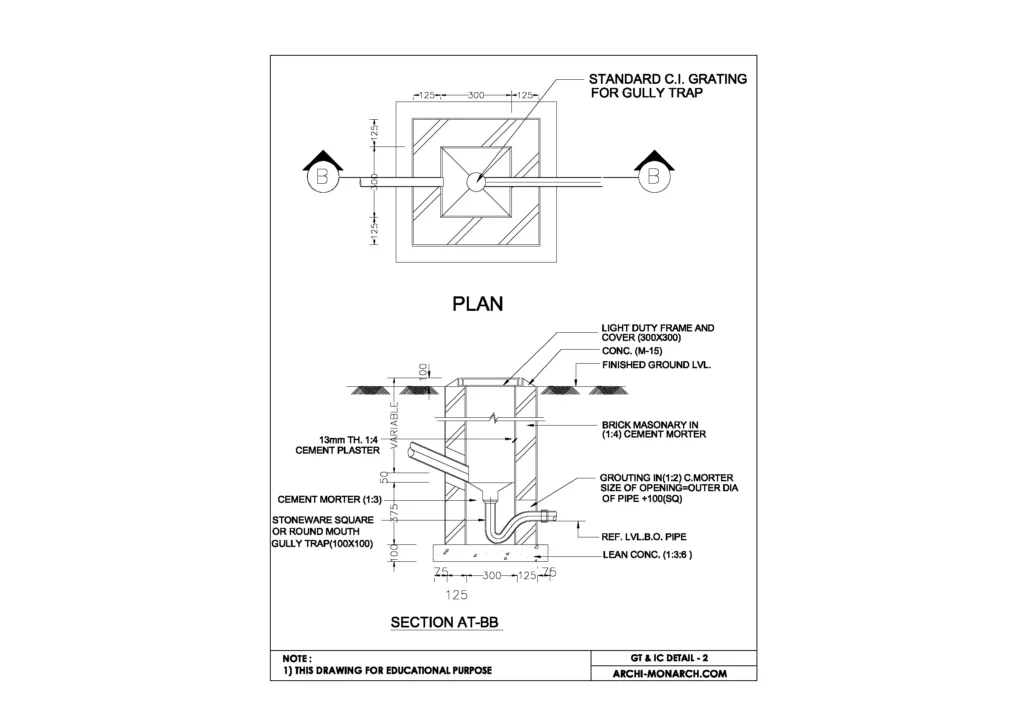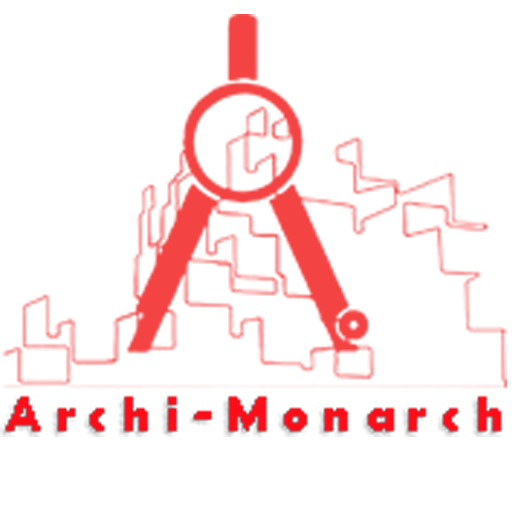In architecture, a gully trap and inspection chamber are components of a building’s drainage system.
A gully trap is a device that is installed in the floor of a building, typically in a kitchen or bathroom, to prevent foul air and sewer gases from entering the building. It acts as a barrier between the drainage system and the interior of the building. Gully traps typically consist of a removable grate or cover, which allows access to the trap for cleaning and maintenance.
An inspection chamber, also known as a manhole, is an access point in a drainage system that allows for the inspection and maintenance of the pipes. These are typically located at the point where the drainage pipes from a building connect to the main sewer line. Inspection chambers consist of a removable cover or lid, which allows access to the chamber for maintenance and repair of the pipes.
Detail drawings for these components would show the exact dimensions, materials, and construction methods to be used for the gully trap and inspection chamber. These drawings are used to communicate specific design elements and construction methods to builders and contractors.
If you want to know about the staircase detail or ramp detail or landscape detail, please click the link.
Image of gully trap and inspection chamber detail and downloadable (in DWG) link below

Gully trap (GT) and inspection chamber detail drawing – 2
A gully trap and inspection chamber detail drawing is a technical drawing that shows specific, often small, parts of a building’s drainage system in great detail.
These drawings are used to communicate specific design elements and construction methods to builders and contractors.
The drawing would typically include:
- Dimensions and material specifications for the gully trap and inspection chamber
- Location and connection details of the gully trap and inspection chamber in relation to the drainage system
- Details of the cover/lid and its mechanism
- Details of the pipe connections and gradients
- Details of the ventilation if any
The detail drawing may also include notes and instructions for installation and maintenance. It is important to note that these drawings are made by qualified professionals, who are well versed with the building codes and regulations, to ensure the safety and functionality of the drainage system.
Our tips to help you improve your architectural gully trap and inspection chamber detailing.
